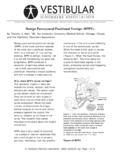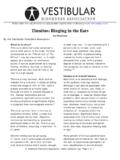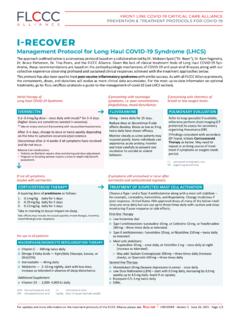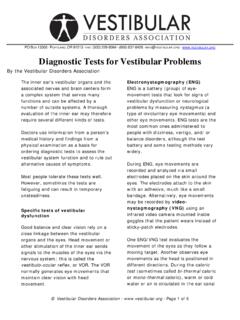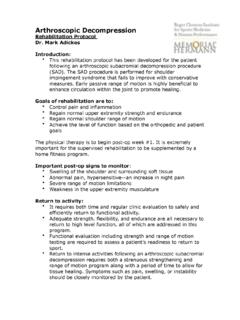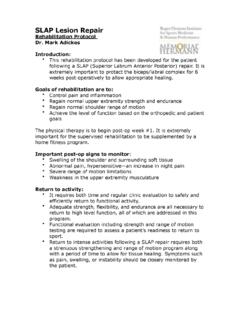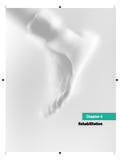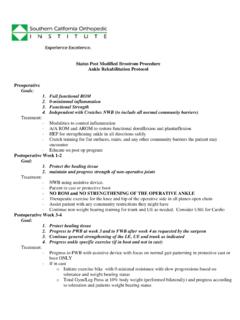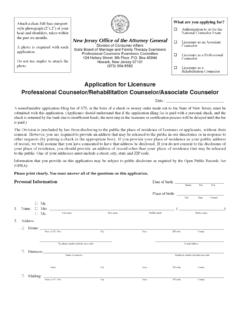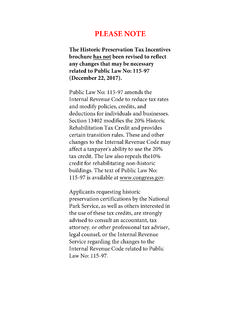Transcription of —An Effective, Evidence-Based Treatment
1 PO BOX 13305 PORTLAND, OR 97213 FAX: (503) 229-8064 (800) 837-8428 Vestibular rehabilitation An effective , Evidence-Based Treatment By Anne Shumway-Cook, PT, PhD; Professor Emerita, Department of rehabilitation Medicine, University of Washington, Seattle, Washington People with vestibular inner ear disorders often experience problems with balance and position or movement-related dizziness. These primary symptoms are often accompanied by secondary symptoms associated with reduced activity levels. Secondary symptoms include decreased strength, loss of range of motion, and increased tension (particularly in the cervical and shoulder region), leading to muscle fatigue and headaches. These symptoms affect a person s ability to change positions (such as lying down) or move about without imbalance and vertigo. Even moderate dizziness may be debilitating enough to diminish quality of life, reduce employability, and complicate all aspects of life.
2 The result can be economic and social devastation. Vestibular rehabilitation is a specialized form of therapy designed to alleviate both primary and secondary symptoms of vestibular disorders. Frequency of inner ear disorders Dizziness and disequilibrium are common complaints reported by adults during visits to their doctors. Dizziness itself is not a disease it is a symptom that can result from a vestibular disorder or from difficulties unrelated to the inner ear, such as cardiovascular, neurological, metabolic, vision, or psychological disorders. However, as many as 45% of people with dizziness symptoms have problems in the vestibular system (balance organs of the inner ear).1 What is vestibular rehabilitation ? Vestibular rehabilitation therapy (VRT) is an exercise- based program for reducing the symptoms of disequilibrium and dizziness associated with vestibular pathology (disease or disorder). A common neuro-otological approach for managing such symptoms is to prescribe medication that suppresses vestibular function.
3 However, in the long term, such suppressants can interfere with a person s ability to make necessary adaptations. In addition, many of these medications cause drowsiness that may limit a person s ability to be active. VRT is an alternative Treatment involving specific exercises that can eliminate or significantly reduce symptoms by promoting central nervous system compensation for inner-ear deficits. The program is designed to achieve these goals: 1. Decrease dizziness and visual symptoms. Vestibular Disorders Association Page 2 of 8 2. Increase balance and walking functions. 3. Increase general activity levels. The program may include exercises for: Coordinating eye and head movements Stimulating the symptoms of dizziness in order to desensitize the vestibular system Improving balance and walking ability Improving fitness and endurance Exercises vary depending on the type of inner-ear disorder and the associated symptoms.
4 Who needs vestibular rehabilitation ? It is critical that persons entering a VRT program have a confirmed diagnosis of vestibular pathology because not all dizziness is caused by vestibular deficits. Most referrals come from otolaryngologists or neurologists. If there is some question about the nature of the underlying disorder in individuals who are referred from other sources, the treating therapist may request an otology consult. VRT can help with a variety of vestibular problems, including: benign paroxysmal positional vertigo (BPPV) and unilateral or bilateral vestibular hypofunction (reduced inner-ear function on one or both sides) associated with diagnoses such as M ni re s disease, labyrinthitis, and vestibular neuritis. Even individuals with long-term unresolved inner ear disorders who have undergone a period of medical management with little or no success may benefit. VRT can also help people with an acute or abrupt loss of vestibular function following surgery for vestibular problems.
5 Does therapy succeed? The best available clinical evidence2,3 shows VRT exercises to be effective in reducing symptoms of many types of vestibular disorders including symptoms that follow certain corrective surgical procedures for vestibular Treatment of BPPV using canalith-repositioning maneuvers (a series of head maneuvers that move displaced calcium carbonate crystals out of one of the semicircular canals of the inner ear) is, however, more effective than medication or other forms of exercise- based ,4 How will the therapist assess the problems? VRT begins with an assessment by a specially trained physical therapist or occu-pational therapist, who collects a medical history and uses different measures to identify the type and severity of symptoms. History: The therapist takes a compre-hensive medical history to document the type and intensity of symptoms and their effect on activities of daily living, previous treatments for the problem including the use of medications, whether the person has fallen or almost fallen, and current activity levels including the amount of exercise and whether the symptoms have caused a reduction in activity levels.
6 Vestibular Disorders Association Page 3 of 8 I ve been told I need vestibular therapy to correct compensation strategies I use to help balance. What is a compensation strategy? The human balance system is complex. It depends upon coordinating motor (movement) responses to sensory information from three sources: vision, muscles and joints, and inner ears. A problem with any one of these sources can cause you to develop new patterns of movement to accommodate or compensate for the change. For example, with a vestibular disorder, you ve probably learned to carry out your normal daily activities while avoiding head movement at all costs, because moving your head is likely to trigger symptoms of dizziness and nausea. You may pick up things from the floor by holding your head erect and sinking down at the knees. You may have rearranged the shelves in your home so that you know where everything is without having to look up or bend over.
7 You may even have changed your behavior in order to feel more secure when your symptoms are acting up. When you are sitting or standing you may hold onto things to maintain your balance and minimize movement. While walking, you may constantly brush your fingertips along the wall or hold onto furniture to keep from falling. In a crowd, you always look down at the ground to avoid the confusing swirl of activity. These types of changes are considered compensations and in the short run help you deal with your symptoms. However, such compensations are stressful both physically and mentally. The result may be headache, neck ache, muscle stiffness, and generalized fatigue. Your energy level may decrease. You may tire easily and have difficulty relaxing. And, perhaps worst of all, these attempts to deal with your symptoms will actually decrease your ability to adjust to your vestibular problem and ultimately worsen your symptoms. Eye movement and vision assessment: Depending on the particular vestibular diagnosis, the assessment may include eye-head coordination tests.
8 These tests address how well the person s eyes move by themselves (such as when tracking a moving object without moving the head), and how the eyes move when the head is also moving. In addition, the therapist may use an eye chart (similar to the one an eye doctor uses) to examine how well the eyes focus during head movements. Vertigo assessment: A dizziness questionnaire helps identify frequency and severity of dizziness symptoms and any associated lifestyle changes. In addition, as part of understanding what specific movements are problematic, the person may be asked to move in and out of different positions requiring head and trunk motion in specific planes of motion and then report the presence and intensity of dizziness symptoms. During this process, the duration of dizziness is timed. A vertigo score is then calculated using Vestibular Disorders Association Page 4 of 8 these measurements. The therapist will also record other symptoms, such as nausea, sweating, and nystagmus (involuntary eye movement).
9 Balance and gait assessment: Several tests will be used to evaluate balance and gait function and to compare balance function relative to that of others in the person s age group. Figure 1 Balance strategies used to control postural sway differ in the direction of corrective movements made to shift center of mass relative to somato-sensory information. For example, with an ankle strategy, forward movement in head and trunk position accompanies forward shifts in the center of mass. With a hip strategy, backward movement in head and trunk position accompanies forward shifts in the center of mass. Assessment of static balance skills may include measures of sway while the person stands on one leg or heel-to-toe. These measurements may be done with eyes open and closed. Dynamic balance skills may be evaluated while the person walks and performs other tasks such as turning the head or changing speed or direction. Further tests of balance may involve tandem walking (heel-to-toe), or walking backwards or sideways.
10 Other tests may be used such as measuring the distance the person can reach for an object while standing with both feet on the ground. A test of sensory interaction in balance may be used by the therapist to assess how well the brain uses vestibular inputs for orientation when other sensory cues, such as vision or touch, are not available. For example, a therapist might observe how steady the person is when standing with eyes open and closed on a solid and level surface, and then on a soft surface ( , a foam pillow). The therapist may examine how well the brain coordinates leg and trunk muscles for balance control. This includes observing the person s ability to shift weight by pivoting around the ankle joints using an ankle strategy or hips using a hip strategy (see figure 1), or by taking one or more steps using a step strategy to function. Figure 2 Orientation of head and trunk positioning is important in coordinating the use of vestibular information during postural-control movements.



